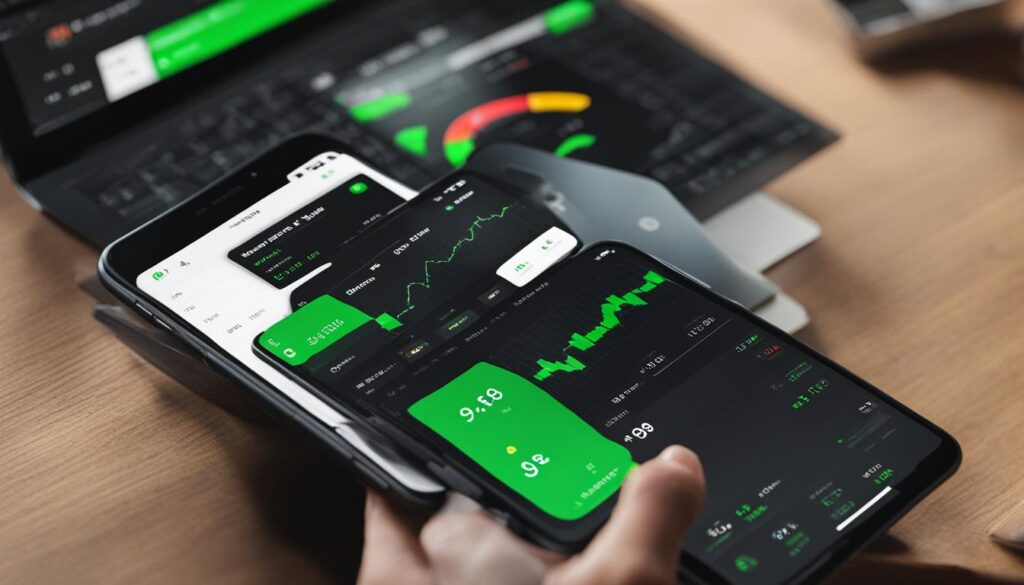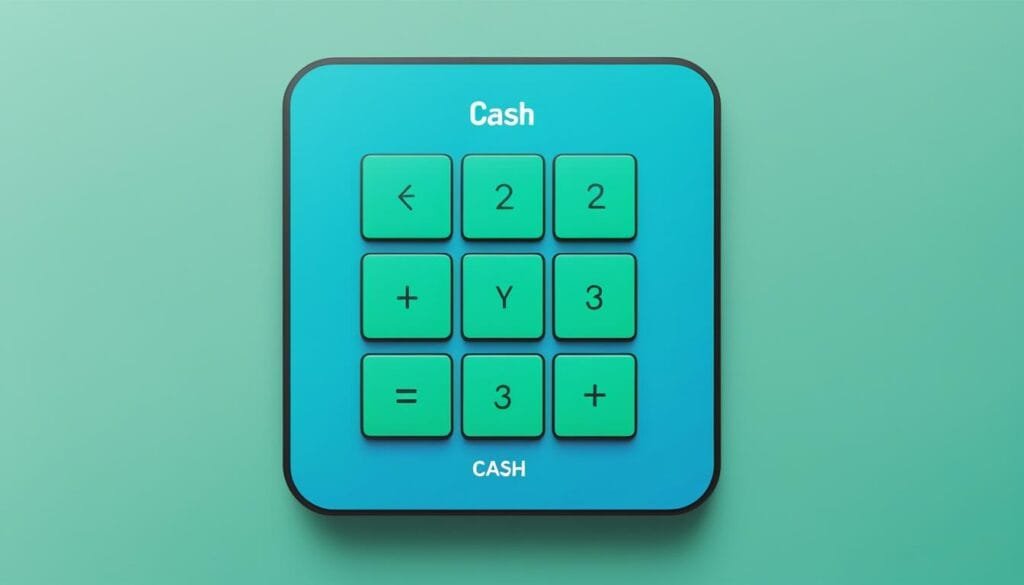As a seasoned investor, I’m always on the lookout for platforms that streamline my trading activities. So when it comes to finding a user-friendly solution for engaging with the stock market, I appreciate the simplicity of a service like Square’s Cash App. With its efficient **cash app selling process**, what might otherwise seem daunting for many is now quite accessible. The platform’s approach in teaching **how to sell stocks in Cash App** is particularly geared towards beginners, ensuring that even those new to stock trading can navigate the waters of financial investments smoothly.
Apart from offering **commission-free trading** for a range of stocks and ETFs, what catches my eye is the seamless transition of funds post-sale directly to my Cash App balance. The guide, **cash app stock selling guide**, especially caters to novice traders looking to dip their feet into stock trading without getting overwhelmed by the complexities of traditional brokerage accounts. As I delve deeper into the features, I’ll share insights into **selling stocks on Cash App** — a process underscoring accessibility and ease of use.
Key Takeaways
- The Cash App revolutionizes the stock selling experience with an intuitive interface ideal for beginners.
- Users can enjoy **commission-free trading** across a diverse range of stocks and ETFs within the app.
- Ensuring immediate access to funds post-trade, Cash App simplifies personal finance management.
- With educational resources on **how to sell stocks on Cash App**, the platform empowers users to make informed decisions.
- Though primarily designed for fractional shares and Bitcoin, Cash App’s scope within stock trading is steadily growing.
- Notably, the platform’s operations adhere to traditional market hours, aligning with NYSE and Nasdaq schedules.
- Understanding the app’s straightforward selling process enriches the investing journey of those seeking a compact trading solution.
Understanding Cash App’s Stock Selling Platform

Trading stocks can seem like a labyrinth for those new to the financial game, but Cash App’s stock selling feature strives to streamline the process, making it a breeze to convert shares into liquidity. I have navigated through numerous platforms, and my experience with Cash App’s intuitive interface makes it a standout option, especially for first-timers in the market. Below, I delve into what makes Cash App an advantageous platform for stock trading endeavors.
Introduction to Cash App Investing
I find Cash App’s approach to investing quite refreshing. Their commitment to making stock trading accessible is evident through a straightforward and intuitive interface. Whether it’s about how to sell stocks in Cash App or monitoring the performance of your investments, Cash App leaves no investor behind. The beginner-friendly nature of the platform dispels the widespread intimidation surrounding investment in the stock market.
Benefits of Selling Stocks on Cash App
The allure of Cash App stock trading isn’t just in its user-friendly design. It’s also in its cost-effective promise—offering commission-free trades with no minimum balance requirement. Users can trade with ease and confidence, learning cash app stock selling tips through an organic, hands-on experience. Furthermore, the ability to trade fractional shares equips users with the flexibility to invest amounts that align with their budgets, delineating a more democratic trading space.
Navigating the Cash App Interface for Stock Sales
The functionality of Cash App’s interface is such that performing tasks like selling stocks for cash on Cash App is practically self-explanatory. Every step in the cash app stock selling tutorial consists of simple prompts and clear options, eliminating any guesswork. It’s particularly commendable how seamlessly Cash App integrates stock selling with everyday banking—allowing you to manage your portfolio and personal finances in synonymous strides.
For instance, when I conducted a sale of stocks on my account, it was a matter of a few taps and a review before the transaction was complete. The interface provided immediate feedback, and the funds were promptly added to my Cash App balance. This ease of access and fluid user experience significantly reduce the barriers to financial participation and embolden more individuals to venture into the world of investing.
In conclusion, my exploration into Cash App’s stock selling capabilities has reinforced why the platform stands as a preferred choice for many, especially those starting on their investment journey. As an advocate of financial literacy and inclusion, I believe Cash App’s investment offering is a substantial step toward empowering a new generation of investors.
Step-by-Step Guide: How to Sell Stocks in Cash App
When I decided to diversify my investment portfolio, Cash App’s platform was an immediate choice for its efficiency and convenience. Navigating the cash app stock selling process is straightforward, and I’m here to guide you through each critical step. Here’s what you need to know about how to sell stocks on Cash App.
First, open your Cash App and tap on the investing section represented by a line graph icon. Here you’ll find an exhaustive overview of the stocks you own. Each stock is accompanied by its current performance, allowing you to make informed decisions before initiating a sale. Select the stock you wish to sell to see more detailed information.
Once you’re on the desired stock’s page, tap the ‘Sell’ button. You’ll be presented with two options for the sale amount: by share quantity or by dollar value. If you’re unsure about the number of shares, the dollar value option simplifies the process, allowing you to sell a portion of your stock based on the amount of money you want to receive.
After choosing the sale amount, you’ll be prompted to confirm your transaction. Here’s where security is paramount. You’ll verify your identity using either a PIN or Touch ID, safeguarding your funds and ensuring that only you can authorize the sale. This simple yet crucial step adds an extra layer of protection to your investments on Cash App.
It’s important to note that the cash app selling steps can be initiated anytime, but keep in mind that orders are only executed during the trading hours of the NYSE and Nasdaq. This means you can place a sell order in the evening or on weekends, but it won’t be processed until the market reopens.
On the topic of costs, Cash App maintains a customer-friendly approach by not charging commission fees on stock trades. There are some small regulatory fees imposed by the SEC, but these are minimal and unavoidable across all trading platforms.
Overall, cash app how to sell stocks is a seamless process designed for ease and efficiency. Whether you are a beginner or seasoned investor, understanding and following these steps ensures that you can manage your stock investments within minutes right from your mobile device.
Conclusion
As an investor who’s navigated the intricate world of stock trading, I appreciate the streamlined experience that Cash App provides. When I ponder why sell stocks on Cash App, the answer is simple: it exemplifies ease and integration. For those of us who prioritize these elements, the platform serves as more than just a tool; it’s a foothold in the financial markets, devoid of unnecessary complications.
Why Choose Cash App for Your Stock Sales
The benefits of Cash App stock trading are evident. It removes the traditional barriers to entry, allowing beginners like me to embark on an investment journey with confidence. With no minimum balance or trading fees, Cash App respects my financial autonomy and encourages a more personal approach to managing assets. It’s not just about selling stocks; it’s about embracing an accessible financial lifestyle that aligns with my on-the-go demands.
Tips for Efficient Stock Trading on Cash App
Along my journey, I’ve gleaned valuable Cash App trading insights that have bolstered my efficiency. Timing is crucial, hence keeping an eye on market hours ensures my sales are executed without delay. The app’s limited trading tools remind me to be resourceful and proactive in my decisions. And, of course, verifying every transaction anchors my trust in the application, acknowledging accurate reflections of my financial choices within my portfolio.
Looking Towards the Future of Cash App Investing
Anticipating the future of Cash App investing, I’m intrigued by the possibilities. As digital banking evolves alongside my financial needs, I envision Cash App rising to meet the expectations of its users with expanded features and diversified cryptocurrency options. Ultimately, I see it fortifying its role in the fintech ecosystem, adapting to our collective push for greater financial empowerment and responsive investment opportunities.
FAQ
How can I start selling my stocks on Cash App?
To sell stocks on Cash App, you’ll need to open the app, tap on the investing tab by selecting your balance in the bottom left corner, choose the stock you wish to sell, select the amount or number of shares, and confirm the sale with your PIN or Touch ID.
What are the benefits of selling stocks through Cash App?
Selling stocks on Cash App offers several benefits, including commission-free trades, ease of use with a simple interface, immediate access to funds after selling the stock, and the ability to trade fractional shares.
Are there any fees I should be aware of when selling stocks on Cash App?
Cash App does not charge commission fees for stock trades; however, like any trading platform, it may pass on government and regulatory fees to the user on certain transactions, including the SEC and TAF fees.
When can I sell my stocks on Cash App?
While you can place a sell order at any time using Cash App, orders will only be executed during the stock market’s active trading hours, which are primarily during the NYSE and Nasdaq trading sessions.
How do I navigate the Cash App interface to sell stocks?
Cash App’s interface is designed to be user-friendly. To sell stocks, you need to tap on your balance, scroll to your stocks section, select the one you want to sell, choose the number of shares or the dollar amount, and confirm the sale. The app will guide you through each step with clear prompts.
Can I sell only a portion of my stock on Cash App?
Yes, Cash App allows you to sell fractional shares, which means you can sell just a portion of your stock instead of the entire holding.
How quickly will I receive the funds after selling stocks on Cash App?
After selling stocks on Cash App, the proceeds are typically available in your Cash App balance immediately following the settlement period—which is usually two business days after the sale date.
What types of stocks can I sell on Cash App?
Cash App allows you to sell a selection of stocks and ETFs, more than 1,800 in total. However, it does not support the sale of mutual funds, futures, or options.
Is there a minimum balance required to sell stocks on Cash App?
No, Cash App does not require a minimum balance to sell stocks. Even a fractional share can be sold, making it accessible to investors of all levels.
What should I keep in mind for efficient stock trading on Cash App?
For efficient stock trading on Cash App, be aware of market hours, understand the limited trading tools and features, always double-check your transaction details, and keep an eye on both short-term and long-term financial goals.
What initiatives might Cash App take to enhance its investing platform in the future?
While not officially announced, Cash App could potentially expand its investment offerings, add more features for in-depth financial analysis, enhance its cryptocurrency options, or provide additional educational resources to benefit its users.
Can I Use Cash App to Buy and Sell Stocks?
Yes, you can use Cash App to buy and sell stocks. The process is simple with Cash App routing explained. You can link your bank account, deposit funds, and start investing in stocks. With its user-friendly interface, Cash App makes stock trading accessible to everyone.

